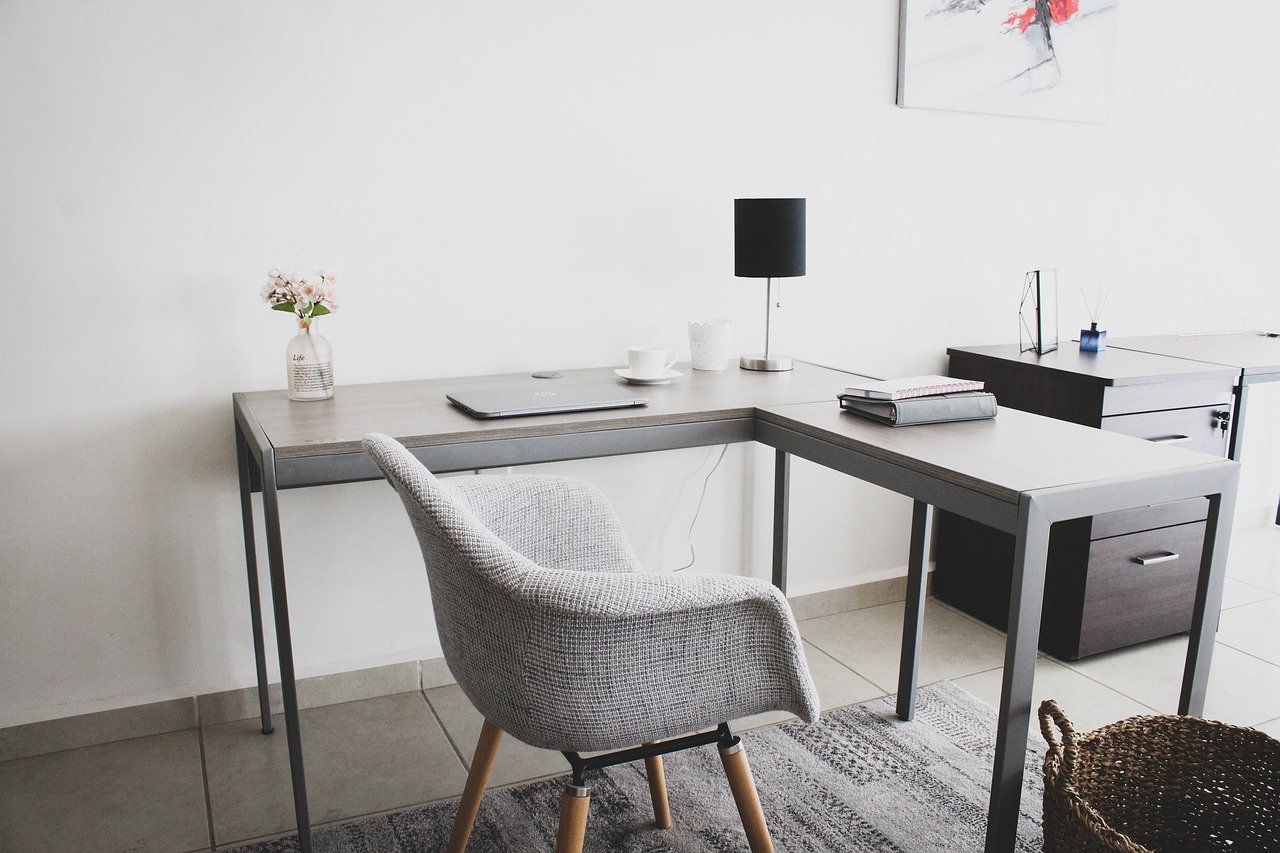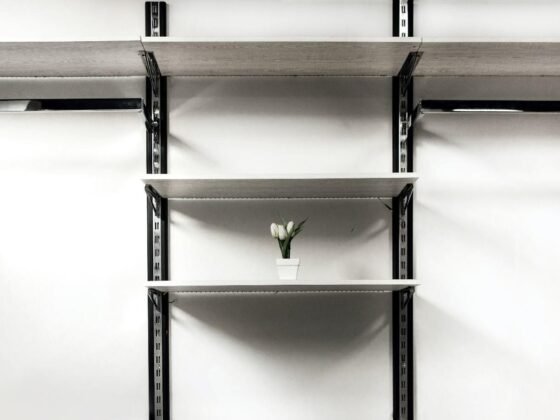Table of Contents Show
Just because so many corporate office workspaces are done in shades of gray doesn’t mean that your home workspace needs to be!
While gray may seem no-nonsense, streamlined, and a good neutral color for productivity, color psychology has shown us how adding colors mindfully to your home workspace can actually increase your productivity, creativity, and work enthusiasm.

What Colors to Choose
Color Psychology
Blue is considered to be an intellectual color, fostering organization, communication, and efficiency.
It has been scientifically proven to increase focus, reduce mental strain, and even reduce blood pressure! Green is another great color for your workspace, being the color of balance.
It is unique in that it is physically calming but mentally stimulating. Yellow is the color for creativity and attentiveness. Red is a very physical color and promotes alertness and speed.
With both yellow and red, it’s best to either approach them sparingly or get creative with the hues you use.
Hues
The deeper the hue of any given color, the more the color gives off a sense of seriousness and sophistication.
Navy, burgundy and deep forest green take the elements of that color’s psychological benefits and lend weight and high-brow professionalism to them.
On the other side of the spectrum, lightening a color will also change the benefits.
A great example of this is red’s lightest hue, pink. Pink still has the warmth and energy that red brings, but adds a level of calm to it. Any of the pastel hues will feel light, soothing, and sociable.
If your job entails a lot of human interaction with the public, these less saturated colors will help you maintain caring and gentleness.
How to Use Them
Walls
The most obvious place to add color is by slapping a fresh coat of paint on the walls. The difference between painting an entire room versus an accent wall depends quite a bit on the color you choose.
A whole room of bright primary yellow is not going to encourage happiness and a calm mental state! However, a wall of a cheery pale yellow or the on-trend mustard hue can boost your creativity while not being overwhelming.
For accent walls, you can also consider wallpaper instead of paint.
Floors
Changing your carpets or yanking it all up to hardwood might not be feasible, but a well-chosen rug can work wonders. The perfect way to use the deeper hues to convey sophistication is with a soft, deep rug.
These dark shades add weight. Putting them on the walls will make the room seem smaller, but putting that visual weight on the floor adds a luxurious feel.
Read Also:
Furniture
Most desks and bookcases are very neutral, in various woods, blacks, and whites. Let them be your anchor points while you play with color with other furniture pieces! A comfortable pink office chair will be both mentally and physically relaxing as you settle into work.
A navy armchair will make any guests feel respected. Use spray paint to give your metal filing cabinets a facelift with a cheery, light color.
Even smaller items like metal wastebaskets and lampshades can be used to add color to your home workspace without straining either your budget or your eyes.
Nature
There’s a reason blue and green are the most calming colors! The natural world is predominantly blue and green, and we are simply wired to be soothed by nature.
Without spending a dime, you can bring some of that blue and green into the color scape of your workspace by simply opening your blinds and curtains as wide as you can! Indoor houseplants are a perfect way to bring the green inside, and they also improve your air quality!
There is such a wide variety of houseplants to suit your space, your available lighting, and even how much attention you can be bothered to give them.
Art
Keep in mind what artwork you choose to put on your walls. A beautiful landscape will bring in those calming blues and greens.
These small chunks of space are the perfect place to utilize your bright yellows and reds, reaping the benefits of their colors without overwhelming the space.










